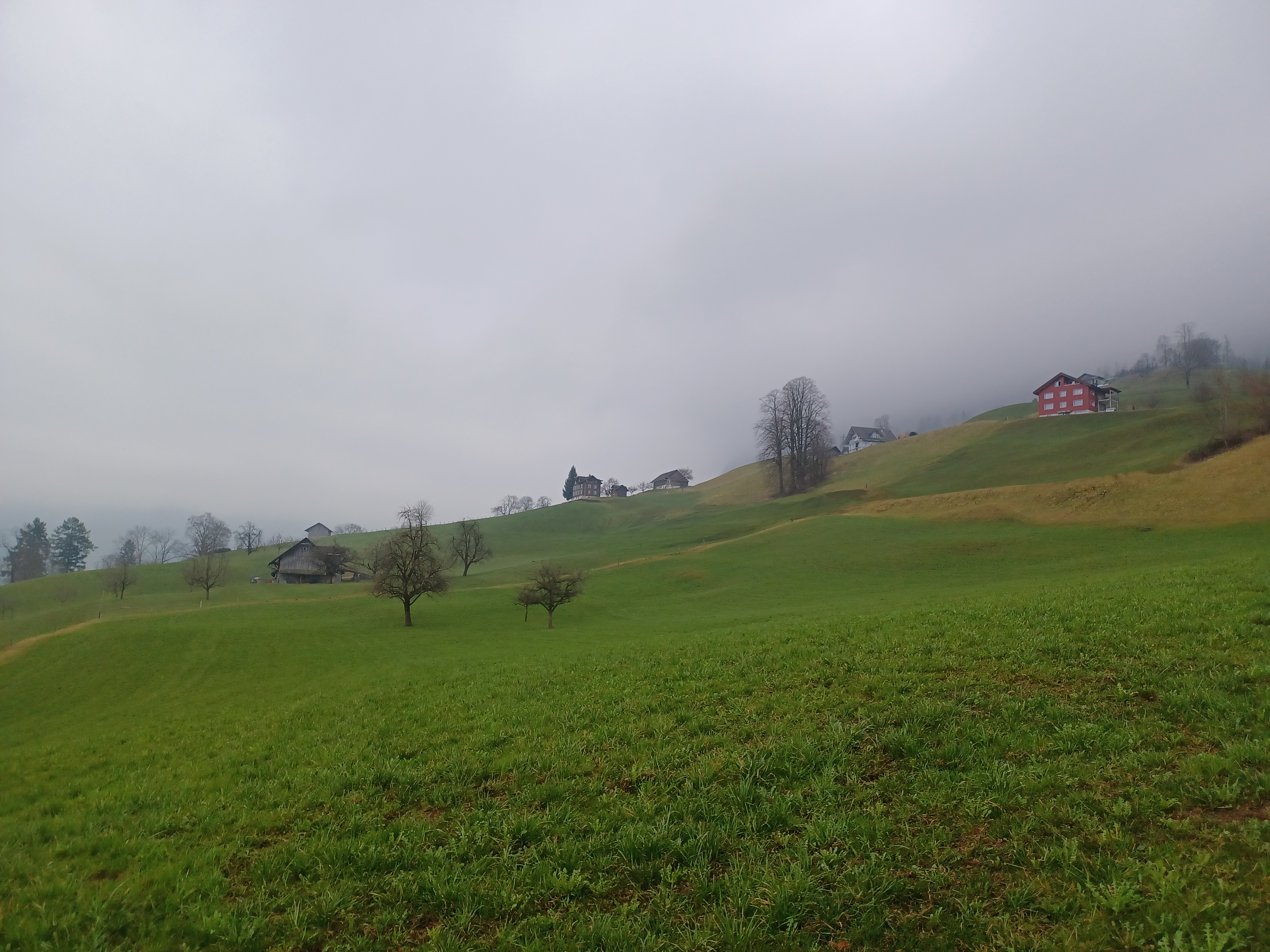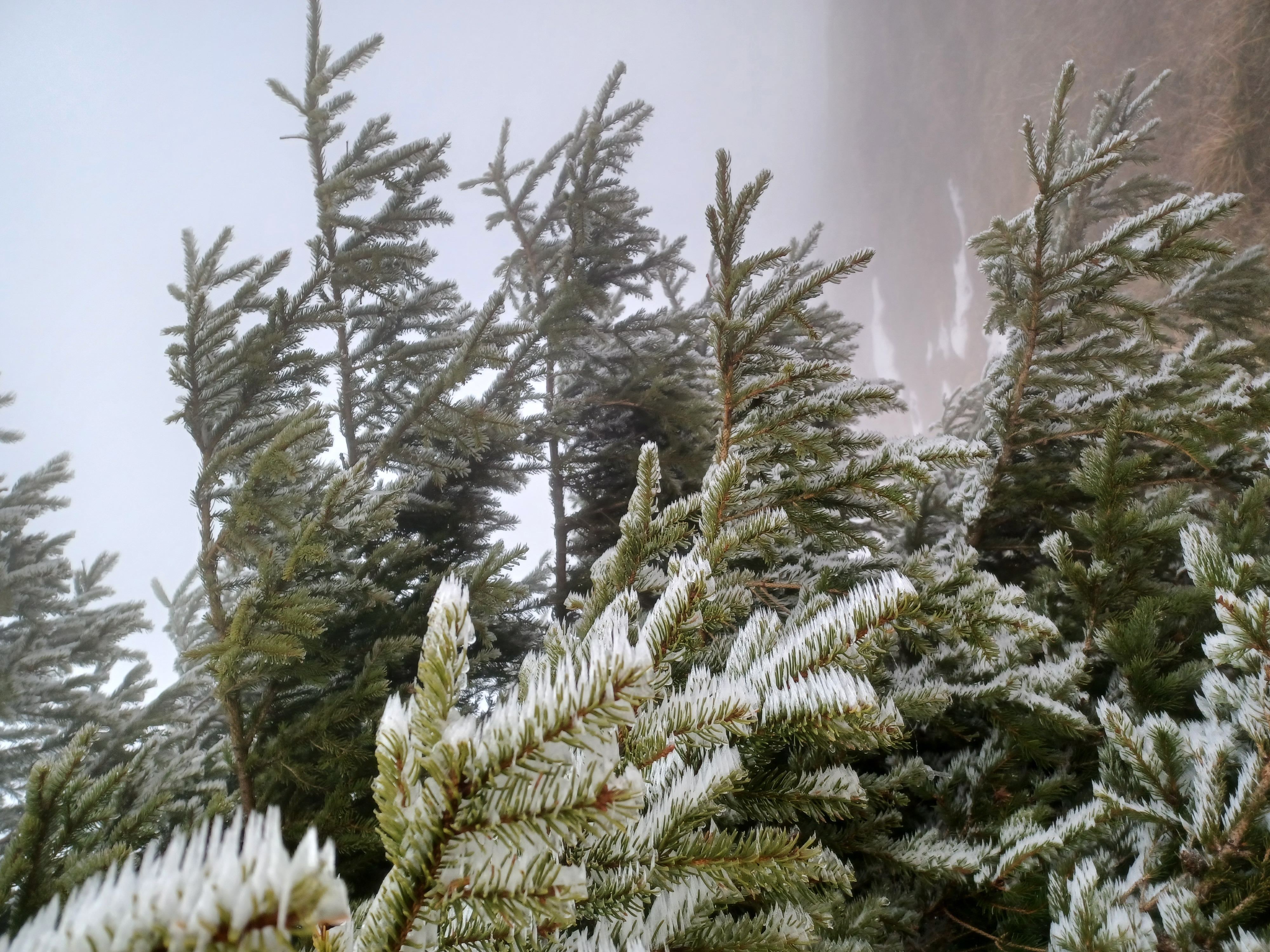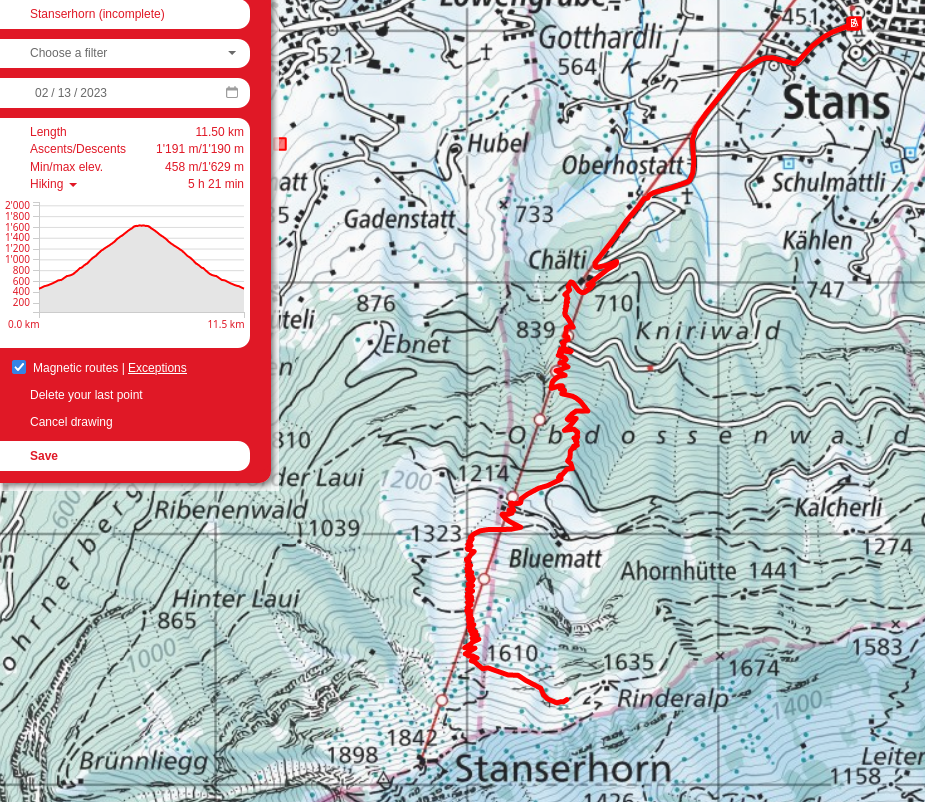Stanserhorn
Pilatus’ slightly shorter neighbor. I didn’t end up making it to the top; I got within a couple hundred meters, but a combination of zero visibility due to being in the clouds and trying to walk horizontally along a 70-ish degree incline with thigh-deep snow resulted in a bunch of short slides and following animal tracks instead of the buried trail. Eventually, I decided that rolling down a mountain wasn’t how I wanted to die. I’d love to do this again, but with nicer weather.
Due to poor visibility, I don't have many pictures to share, so here's some random stuff:

The fields outside Stans. Switzerland seems to stay quite green year-round at lower elevations.

Cable car tower for heading up to the summit.

I wrote the original text a couple days after doing the hike. I'm writing this in February 2023: winter hiking is a really really dumb idea if you're not careful. This hike, the previous one on Pilatus, and most of the winter ones you'll see later on, were really bad ideas. The slopes were too steep, the snow too avalanche-y, I was going alone, and I hadn't told people were I was. All great ways to get myself killed. I'm not even close to even moderately experienced, so I can't give proper advice on what you should do. What I've picked up so far:
- Avoid slopes over 30 degrees, since this is when avalanches become more common. You can get a map of all these slopes using schweizmobil.ch, selecting Winter hiking, opening the map, and checking the 'Slope classes over 30' box. It significantly limits the hikes you can do, but better to stay alive, eh?
- Check the avalanche bulletin to see what areas/elevations/slope directions are risky: https://www.slf.ch/en/avalanche-bulletin-and-snow-situation.html#avalanchedanger
- Check the snowpack as you hike. Is it powder? Are you punching through a hard top layer to a soft one underneath? Are you on the windward side or the leeward side of a slope? Look up what conditions lead to avalanches, or better yet, take a course
- Go with other people. If you have no-one to go with, then stick to the absolutely most risk free routes possible.
- Tell people where you're going, and make sure if something goes wrong, you have a way to communicate it
- Bring emergency gear like emergency blankets or a GPS beacon for rescue
I was eating at the ETH Mensa a couple days ago and overheard a group talking about how 10 people had died the previous day in the Alps. I think I could have joined that statistic a couple times. Don't be dumb like me, get some training and take measures to stay safe.
Putting all this warning info at the bottom of the most boring album is a great way for no-one to see it, so I'll copy-pasta it to the riskiest hike I've done once I catch up.
